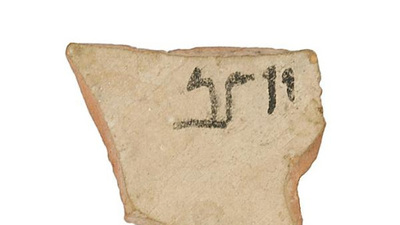“And let them make Me a sanctuary that I may dwell among them. Exactly as I show you — the pattern of the Tabernacle and the pattern of all its furnishings — so shall you make it. “ (Shemot 25:8)
Some of our greatest commentators have wrestled with the connection between the command to build the Mishkan (the Tent of Meeting or Tabernacle) and the sin of the Golden Calf. On the verse “And you shall make it” (Shemot 25:9), relating to the construction of the Tent of Meeting, the famous Italian commentator Ovadia Sforno (sixteenth century) made the following remarkable statement: “In order that I shall dwell between you, to speak with you and to accept the prayers and the service of Israel. This is not as it was before the sin of the Golden Calf, where it was said: “In any place where I shall have My name mentioned, I shall come to you and bless you.” (italics added) (Shemot 25:9.)
And a little later: “For at the end of the first forty days God gave the tablets made by Himself to sanctify all as priests and a Holy nation, as He had promised. But they rebelled and became corrupt, and fell from this high spiritual level.” (italics added)
The Tent of Meeting (and therefore the Temple), says Sforno, are the result of Israel’s choice to do evil — to opt for the Golden Calf. In other words, had the Golden Calf incident never taken place, the directive to build a Tent of Meeting would never have been given.
What becomes exceedingly clear is that the real Temple, as the site of divine service, is not limited to the finite world. Its rightful place is the whole universe and that which is beyond the universe: “In any place where I shall have My Name mentioned I shall come to you.” Clearly, God’s greatness is beyond all physical limitations and encompasses the universe and the “worlds” beyond the universe.
If this is the thrust of God’s original intention, then what is the need for a physical place to symbolize God’s dwelling in this world? What purpose is served by the many ritual objects like the Altar, the Menorah, and the Ark in the Holy of Holies? Sforno suggests that the need for these “props” is the direct outcome of the sin of the Golden Calf.
The Sin of the Golden Calf
What was the essence of this sin? What mental construct was reflected in this transgression, in which so many of the Jews were involved?
The sin itself could obviously not have been a regular form of idol worship: only a short while earlier, the Jewish People had experienced a divine revelation of unprecedented intensity. The spoken word of God reached them in an open encounter and was of unquestionable veracity. In one voice the entire people avowed their commitment – Na’ase ve-Nishma.” (“We shall do and we shall hear”) (Shemot 24:7). Once and for all, the existence of God and His relationship to this world had been established. And still the question cries out to be answered – after all this, how could the sin of the Golden Calf have come about? We must conclude that the creation of the Golden Calf has to be seen as an attempt to deal with this overwhelming experience.
After all, to deal with an experience like this requires vast spiritual resources. It demands a spiritual level of unprecedented heights, and above all, the abolition of any physical symbol of the Divinity. In short, this is monotheism, which is the realization of the unitary and unique nature of God in its most advanced form. And even that which flows forth from God’s unity cannot fully be captured in the mundane. In its ideal state, Judaism should have had no need for symbolism altogether. Man would only be permitted to contemplate matters of the monotheistic world.
This, however, was unattainable for the generation of the Exodus, which only shortly before had been steeped in a world of idol worship. To hold on to the unprecedented.
Sinai experience was only possible, so they believed, through a tangible and, therefore, more down-to-earth medium – otherwise it was in danger of slipping away, dissipating into a spiritual nothingness with no real implication, nor indeed eternal validity.
This is undoubtedly the leitmotiv behind the episode of the Golden Calf. There was a perceived need to ensure that the revelatory experience of Sinai remain an ongoing experience. The form of a calf, symbolic of the godhead in the cultural milieu of Egypt, from which the people had so recently emerged (and also, later, seen by kabbalistic tradition as a symbol of immense spiritual power), was understood to be the most appropriate way to accomplish this goal. It was, however, clear to all involved that this was not meant to be, nor was it perceived as, the monotheistic godhead itself. It was merely a symbol of the Creator and Mover of the Universe in mundane terms.
This, then, was the reason behind the fashioning of the Golden Calf. However, the creation of this image brought into being a completely different situation. Sforno’s level of monotheism was not yet within the reach of the Israelite people. The fashioning of the Golden Calf showed that the people still could not relate to God without resorting to symbolism. The symbol-less world of ultimate monotheism had, perforce, to accede to a symbol-full monotheism.
The Dangers of Symbolism
The use of symbolic representation is, however, not without its dangers. This is exactly what the incident of the Golden Calf demonstrates. Because of their great, emotive power in the world of human imagination, wrong conclusions may be drawn from a misplaced symbol. It is often beyond our capabilities to create appropriate representations ourselves. We may never grasp the metaphysical world to such an extent that we can reflect it within the mundane. Therefore, symbols of this kind can only be received. They cannot be deduced by the limited human mind.
What the makers of the Golden Calf did not understand was that no symbol could ever encompass the essence of God Himself. Even when a symbol might otherwise be called for, only God’s way of dealing in and with this world may be reflected in a symbol – not His essence. Only God Himself can adequately conjure up and command an appropriate, yet still approximate, symbol.
Hence, the divine command to build the Mishkan was a more human, more mundane, and therefore more symbolic way of getting across the great values of monotheism, while still reminding us, however, of its ultimate symbol-less monotheism. As suggested by Sforno, the call for the Mishkan can only be seen as a concession to human weakness.
The Impudence of Prayer
Yet another reminder of what true monotheism is all about comes from the Siddur (prayer book). There, the chazan (communal reader) is instructed to open the main body of prayers with: “Barchu et Ha-Shem Ha-Mevorach” (Praise You the Lord, Who is ultimately praised). The congregation, however, is requested to simultaneously say: “His name is elevated above all praises and blessings.” This is intoned in silence, after which the community responds in a loud voice with: “Baruch Ha-Shem Ha-Mevorach Ie-olam va-ed” (Praised is the Lord, who is ultimately praised).
This is, to say the least, something of a paradox: first there is a call to praise God, which is simultaneously belied by a statement that His name is elevated beyond all praises and blessings. In other words, praising God is an impossibility – it is beyond man’s capabilities! After this, the community continues to praise God, as if to say that it is within the power of man to praise God after all.
The same paradox may be found in the Kaddish prayer: “May [God’s] great Name be exalted and hallowed in the world of His creation (…) He is (…) honored, exalted, glorified, adored (…)” Suddenly, the worshiper is asked to radically change direction: “[God] is beyond the power of all blessings, hymns, praise, and consolation that are said in this world and now say: Amen.”
This paradox is reflected in a unique story related in the Talmud: Rabbi Chanina once observed a worshiper in the act of praising God with numerous additional laudations: not only was God “great”, “mighty”, and “powerful” but also “majestic”, “awesome”, “strong”, “fearless”, “sure”, honored” and so forth. (Berachot 33b.)
Rabbi Chanina waited for the worshiper to conclude and then asked him if he really thought he had praised God sufficiently! The Talmud tells us that one should only praise God by the three words that Moshe used and leave it at that. Man may begin praising God, but he can never do so sufficiently; therefore, any attempt only succeeds in limiting, however fulsome it may be. The more praises one heaps on, the more one ultimately confines God’s attributes. This is nothing short of blasphemy.
The message of this story is that in reality, man should be speechless before God. To grasp the greatness of God should render him silent. No words can ever suffice to extol the awesomeness of this experience. Silence is therefore the highest expression of prayer.
So why do we not stand in a prayer of silent contemplation? Why utter words if no words can ever suffice? The answer is now clear to us: the “prayer of words” is (once more) a concession to human weakness. We simply are unable to stand in contemplative silence; even in meaningful silence we cannot grasp the immense greatness of God. Our minds cannot grasp what our heart knows.
In the midst of such a silence, our mind would wander, and paradoxically, the focus of our attention would shift away from our Creator. In this state of human weakness, we start to look for other ways to concentrate our minds on our Maker. This, then, is the function of the verbal prayer. It is more down-to-earth, more tangible, and therefore, more appropriate to man’s condition. Such is the secret of prayer.
Thus, the institution of formal spoken prayer was a direct continuation of the building of the Mishkan – a way to concretize our religious experience, while paving the way to true monotheism. Just as the true Mishkan is the entire universe, so true prayer can only be the silence of overwhelming wonder.
This essay appears in Cardozo on the Parasha. Shemot, Kasva Publications, Jerusalem, New York, page 161, under the title: “On Silence, the Mishkan, and the Golden Calf”.




